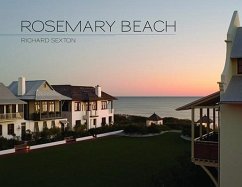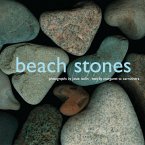In praise of photographer Richard Sexton . . . " . . . combines artistry, storytelling, and powerful evocations of the past to create work that reflects the rich landscape of Louisiana." --Louisiana Endowment for the Humanities "Rosemary Beach is far closer to the Casbah in Tunis or the French Quarter of New Orleans than to an American suburb. And in this regard, from an American perspective, it's new and urban in a profound way." --from the preface In this evocative photo essay, renowned photographer, artist, and author Richard Sexton describes and documents the innovative design of Rosemary Beach, Florida. He explores the unique community's success and significance within the New Urbanism movement. Designed in 1995 by planning pioneers Andres Duany and Elizabeth Plater-Zyberk--the same husband-and-wife team who rose to prominence for their design of Seaside--Rosemary Beach emerged a decade after Seaside as a decidedly different community. Rosemary Beach's architectural identity stems from its unified underlying design. European colonial influences are apparent: as in the West Indies, New Orleans, and St. Augustine, the houses feature façade-length porches, large windows and doors, and steep roofs. The raised homes provide off-street parking, guest accommodations, privacy, and security. Vehicles are a muted element of the visual landscape, unlike the car-dominated vistas of Seaside. This aesthetic dictated the creation of alleyways interspersed with major streets, providing vehicular access to the rear of the houses. This synthesis of elegance and utilitarianism defines Rosemary Beach. Sexton captures the international architectural heritage of Rosemary Beach with a deft eye. His photographs celebrate all aspects of this planned Gulf Coast community, showcasing his talent for capturing everything from pedestrians to porches with equal poetry. Since the mid-1980s Richard Sexton has been a committed author of photographically illustrated books. His approach is descended from the tradition of the photo essay as embodied by the major picture magazines of the mid-twentieth century. Noted as a photographer, critic, artist, teacher, and author in his field, Sexton was awarded the Michael P. Smith Memorial Award for documentary photography by the Louisiana Endowment for the Humanities. He is the author, coauthor, and photographer of several books on New Orleans. Sexton's studio is based in New Orleans, and he teaches photography at the New Orleans Academy of Fine Arts.>
Hinweis: Dieser Artikel kann nur an eine deutsche Lieferadresse ausgeliefert werden.
Hinweis: Dieser Artikel kann nur an eine deutsche Lieferadresse ausgeliefert werden.








